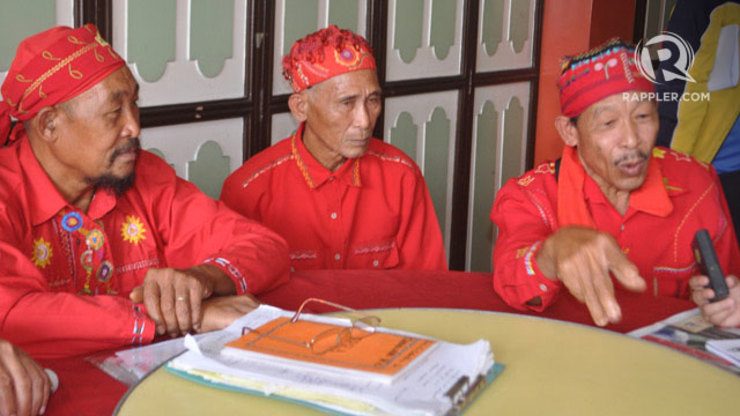SUMMARY
This is AI generated summarization, which may have errors. For context, always refer to the full article.

ILOILO, Philippines – The 40-member council of elders making decisions for the Panay-Bukidnons, the indigenous people inhabiting the area to be affected by the P11.2-billion megadam here, reiterated their support for the Korean-funded project.
“We are declaring tribal and community support for the start of the second feasibility study for the actual construction and implementation of the megadam,” said Leopoldo Caballero, head of the council of elders.
He also chairperson of the Hugpong Pumuluyo Para sa Kalinungan kag Kauswagan (People United for Peace and Development) based in the mountains of Calinog that will be heavily affected by the Jalaur River Multipurpose Project Phase II.
Caballero said this was the general consensus of their tribal council that met last August 2 with other tribe members representing the 12 villages affected by the dam. They also met with municipal councilor Renato Casinao, himself a Panay-Bukidnon who also chairs the Calinog Indigenous Peoples Organization (CIPO).
The Jalaur River Multipurpose Project Phase II is funded by a $203-million ODA from the South Korean government through its Export-Import Bank’s Economic Development Cooperation Fund, with a counterpart fund from the Philippine government amounting to P2.2 billion.
The project in Calinog town in Iloilo involves the construction of 3 dams (Jalaur reservoir, afterbay, and catch dams), a 6.6- megawatt hydropower plant, and an 81-kilometer, high-line canal in Calinog.
It is aimed at developing irrigation systems for 32,000 hectares of farmlands, generating hydroelectric power, and providing domestic and industrial water supply.
NGO: Follow environmental assesment
The second feasibility study, which will be begin in September, is being conducted to get another free and prior informed consent (FPIC) for the actual construction of the dam.
Caballero said that before they signed a memorandum of agreement that paved the way for the conduct of the first feasibility study, they held a series of assemblies and consultative meetings between 2012 and 2013. These were facilitated by the National Council for Indigenous Peoples (NCIP), which explained the project’s objectives to the villagers.
Casinao said their group will “go for an open dialogue and educated negotiation” with the National Irrigation Administration (NIA), the project implementer, the NCIP, and the Department of Environment and Natural Resources. This is “for the purpose of ensuring the megadam is to the advantage of the Panay Bukidnons and is a good model for a megadam project.”
This week, a Korean non-governmental organization monitoring the Korean government’s projects overseas said the Iloilo megadam did not strictly follow recommendations in the environmental impact assessment, one of the requirements for project implementation.
The NGO also noted the absence of consultation with and participation of affected residents in decision making and project monitoring.
Bub Mo Jung, researcher for the Center for Green Official Development Assistance (ODA, said the implementing agencies, if they do not follow proper procedures, may be causing harm to the Panay-Bukidnons.
Caballero, however, said it is about time the Panay-Bukidnons tasted progress and trusted the government to deliver on its promise of relocating them and providing livelihood.
“Dyan nagkaramal-am, dyan nagkarapatay ang kalolohan namon, waay man ka it improvement. Sa pagsuporta kang gobyerno, basi dayan ka ran makatibawas kami nga mga Bukidnon,” Caballero told the local newspaper Panay News in July 28. (Our ancestors grew old and died without seeing improvements in their lives. With the government’s help, Bukidnons may just improve their lot.)
Caballero said more than 100 Panay-Bukidnon tribal heads, Calinog community leaders, and village officials will gather in the coming days for a series of dialogues and consultations with concerned government agencies “para sigurado nga husto kag positibo ang pag implementar kang dam nga dya (to make sure that the implementation of the dam construction is correct and positive).”
Government’s promises
Gerardo Corsiga, NIA Western Visayas general manager, said the Jalaur reservoir, afterbay, and catch dams are constructed by 2016 at the earliest.
He said the government will deliver on what is in the memorandum of agreement, mainly that the Panay-Bukidnons ancestral rights will be protected; they will be given financial compensation; they will be provided loans, jobs and economic development projects such as farm-to-market roads; as well as housing and relocation for those directly affected.
With the villages of Garangan, Masaroy, and Agcalaga (also called the GMA area) to be submerged when the dam becomes fully operational, NIA Region VI has come to an agreement with the villagers that they will be relocated still within the GMA area as requested – notably by tribal head Caballero who lives there with other relatives. – Rappler.com
Add a comment
How does this make you feel?
There are no comments yet. Add your comment to start the conversation.